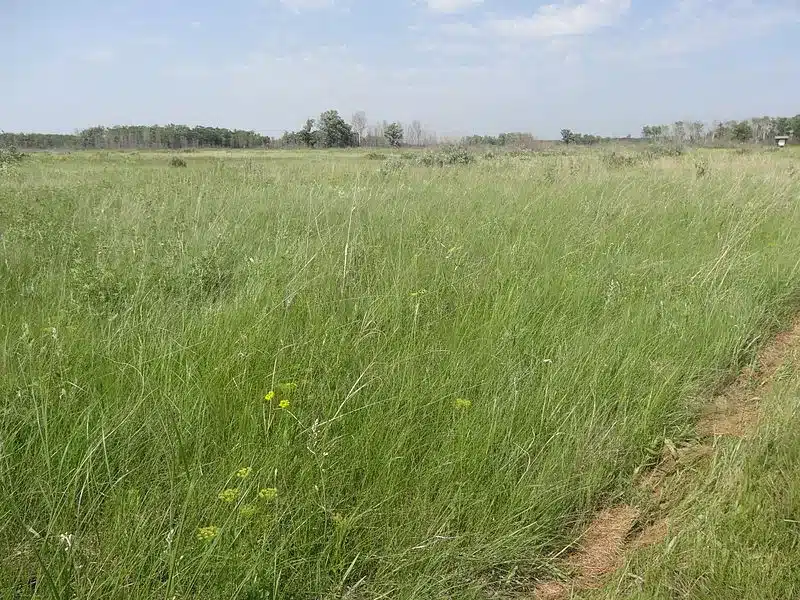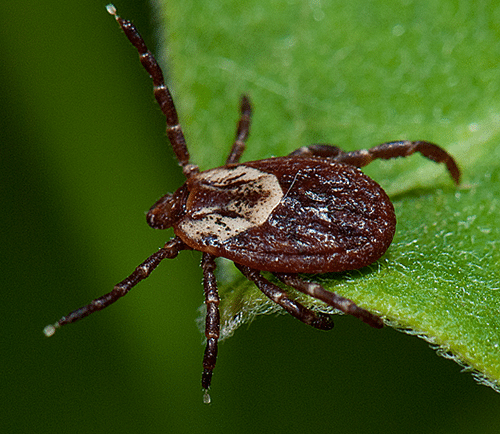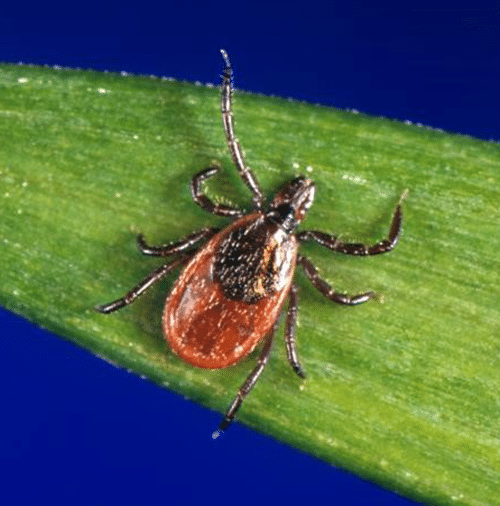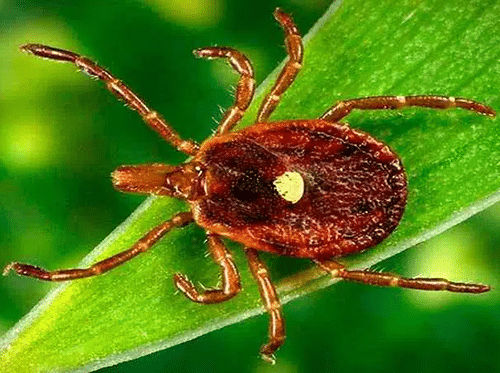
3 Ticks In Ohio: A Comprehensive Guide
Ticks in Ohio have become a growing concern for homeowners, pet owners, and outdoor enthusiasts. With the rising cases of Lyme disease and other tick-borne illnesses, understanding the types of ticks in Ohio is crucial. From the American Dog Tick to the Blacklegged Tick, also known as the Deer Tick, and the Lone Star Tick, each poses unique threats to humans and pets. In this guide, we’ll cover everything you need to know and provide pictures of ticks in Ohio!
Ticks in Ohio: What You Should Know
Understanding ticks in Ohio and the potential dangers they pose is vital for ensuring your safety and that of your pets. Various types of ticks in Ohio can transmit diseases that range from mild to severe, even fatal in some instances. The primary tick species to be cautious of in Ohio are the American Dog Tick, the Blacklegged Tick (or Deer Tick), the Lone Star Tick, and the Brown Dog Tick. These ticks not only affect pets but can also significantly impact human health. Be prepared with accurate pictures of ticks in Ohio to help with identification.
The Blacklegged Tick has seen an increase in numbers in Ohio, especially in regions with its preferred forest habitat. This tick is the primary vector for Lyme Disease, Human Granulocytic Anaplasmosis, and Babesiosis.
Related: Spotted Lanternfly Ohio: What’s All The Fuss?
1. American Dog Tick

The American Dog Tick, scientifically known as Dermacentor variabilis, is the most commonly encountered tick species in Ohio. Widely recognized by its brownish color with light grey mottling on the scutum (the hard plate just behind the mouthparts), this tick is particularly prevalent in grassy areas along roadsides and paths that border woody or shrubby habitats. While ticks in Ohio are generally associated with hiking trails and camping sites, the American Dog Tick’s preference for these specific terrains makes it a common nuisance for both city dwellers and outdoor enthusiasts alike.
Biology & Habitat of American Dog Ticks
One of the most interesting aspects of the American Dog Tick is its life cycle, which consists of four stages: egg, larva, nymph, and adult. These ticks require a blood meal at each stage of their development. Larvae and nymphs prefer to feed on smaller mammals such as rodents, while adults are more opportunistic, latching onto medium to large-sized mammals. Common hosts include raccoons, opossums, and even household pets like dogs.
The tick’s active period in Ohio spans from spring to summer, peaking between mid-April and mid-July. During this time, the adult ticks position themselves on tall grass and shrubs, waiting for a host to brush against the vegetation. This behavior is known as “questing.”
Health Risks of Dog Ticks in Ohio
When it comes to tick-borne diseases in Ohio, the American Dog Tick is the primary vector for Rocky Mountain Spotted Fever (RMSF). Although the incidence of RMSF is relatively low compared to other tick-borne illnesses, it can result in severe health consequences if not promptly diagnosed and treated. Symptoms often mimic those of the flu, making it essential to consult a healthcare provider if you’ve been bitten by a tick and begin experiencing signs of illness.
In addition to RMSF, the American Dog Tick may transmit Tularemia, another less common but equally serious illness. Furthermore, toxins in the tick’s saliva can cause tick paralysis, which is generally reversible once the tick is removed.
How To Identify American Dog Ticks in Ohio
One of the challenges posed by ticks in Ohio, specifically the American Dog Tick, is their ability to go unnoticed due to their small size. Adult ticks can range from 3/16 of an inch for unfed females to 5/8 of an inch when engorged. Prompt identification and removal are critical for minimizing the risk of disease transmission.
2. Blacklegged Tick

The Blacklegged Tick, also commonly referred to as the Deer Tick (Ixodes scapularis), has gained notoriety in Ohio in recent years. This tick species has become increasingly prevalent, especially in areas with forested landscapes. Unlike the American Dog Tick, the Blacklegged Tick poses its own unique set of health risks and challenges, making it crucial for Ohio residents to be informed.
Related: Hornets in Ohio
Biology & Habitat of Blacklegged Ticks
The Blacklegged Tick undergoes a four-stage life cycle: egg, larva, nymph, and adult. Unlike other types of ticks in Ohio, all stages of the Blacklegged Tick can attach to humans. Larvae, nymphs, and adults have a wide range of hosts, primarily white-tailed deer, which gives them the name “deer ticks.”
The habitat of this tick species primarily includes forested regions, but they can also be found in gardens and lawns that are near wooded areas. Their year-round activity makes them a concern even in colder months. Questing behavior is commonly observed in Blacklegged Ticks, where they extend their legs from the tips of grasses and shrubs to latch onto passing hosts.
Related: Rats In Ohio
Health Risks of Blacklegged Ticks
The primary health concern associated with Blacklegged Ticks in Ohio is Lyme disease. Over the years, Ohio has seen an increase in Lyme disease cases, making it a focal point of public health initiatives. In addition to Lyme disease, Blacklegged Ticks can also transmit other diseases like Anaplasmosis and Babesiosis.
It’s worth noting that not all Blacklegged Ticks are carriers of these diseases. However, the risks are high enough that immediate tick removal and medical consultation are advised if symptoms such as fever, fatigue, or a “bull’s-eye” rash appear after a tick bite.
How To Identify Blacklegged Ticks
Adult Blacklegged Ticks are much smaller compared to American Dog Ticks. Females are roughly 3/32-inch long and display a distinctive orange or red hue behind their scutum. Males are even smaller and are uniformly brown. Given their small size, these ticks are often hard to detect, making regular tick checks crucial when you’re in tick-infested areas.
3. Lone Star Tick

The Lone Star tick is a species of tick that has been gradually expanding its range northward, including into parts of Ohio. Named for the distinctive, star-shaped mark on the backs of adult females, Lone Star ticks are increasingly becoming a concern for both pet owners and outdoor enthusiasts in the state.
Biology & Habitat of Lone Star Ticks in Ohio
The Lone Star tick undergoes a three-host life cycle like most other tick species, transitioning through larval, nymphal, and adult stages. Each stage requires a blood meal from a host to develop into the next stage.
The female Lone Star tick lays thousands of eggs after obtaining a blood meal from a host, usually a large mammal such as a deer or a human. Once the eggs hatch, the larvae seek out smaller hosts like birds or rodents. After feeding, they drop off to molt into nymphs. The nymphs then find another host, feed, and drop off to molt into adults. The adult ticks seek larger hosts, including humans, and the cycle continues.
It’s worth noting that Lone Star ticks are among the most aggressive ticks and are known for actively pursuing their hosts, a behavior termed ‘hunter’ or ‘lurker’ strategy. This is in contrast to the ‘ambush’ strategy of ticks that wait on grass tips or leaves for a host to come into contact.
In Ohio, the Lone Star tick predominantly inhabits wooded areas, especially those with thick undergrowth. They also favor shrubby fields and pasture lands where larger hosts are abundant. However, it’s not just deep woods where you’ll encounter these ticks. They are increasingly found in suburban settings, especially near areas with high deer populations. The edge habitat between forested and open areas is particularly attractive to this species, where they can easily move between dense cover and open spaces to find hosts.
Leaf litter, tall grasses, and lower branches of shrubs and trees are common places where Lone Star ticks may be encountered. They prefer areas with high humidity, as they can quickly become dehydrated. Therefore, they often reside under leaves or grasses when not seeking a host.
During winter, these ticks are less active but can still pose a threat during mild spells. Contrary to popular belief, ticks like the Lone Star do not completely hibernate during winter and can become active if the temperature rises above freezing.
Health Risks of Lone Star Ticks
Lone Star ticks in Ohio pose significant health risks as they are vectors for multiple diseases. These include Ehrlichiosis, Southern Tick-Associated Rash Illness (STARI), and Tularemia. In some cases, they can also cause Alpha-Gal Syndrome, an allergy to red meat. Each of these conditions presents its own set of symptoms, which can range from mild to severe. These can include fever, fatigue, headache, muscle pain, and skin rashes. If symptoms manifest after a tick bite, immediate medical consultation is crucial for prompt diagnosis and treatment.
How To identify Lone Star Ticks
Identification is an essential step in managing the risks associated with Lone Star ticks. Adult females are most easily recognized by a distinctive white spot on their back. This feature makes them stand out from other tick species that you might encounter. By knowing how to identify these ticks, you can take immediate action if you find one on your body or clothing. Preventative measures include the use of tick repellents and frequent tick checks, especially after spending time in wooded or grassy areas.
How To Remove A Tick
To remove an attached tick, use fine-tipped tweezers to grasp the tick as close to the skin surface as possible. Pull upward with steady, even pressure. After removal, thoroughly clean the area with antiseptic. It is advisable to save the tick for identification in case symptoms of a tick-borne disease develop later.
How To Prevent Ticks
The most effective way to protect yourself and your pets from ticks is through proper preventative measures. These include wearing appropriate clothing when in tick-prone areas, using tick repellent, and doing a thorough tick check after spending time outdoors. Ticks cannot be prevented within the woods, however, ticks on your property can be prevented by hiring your local exterminator to spray areas of the property prone to ticks.
Health Risks
Prompt removal of ticks is crucial to preventing infection. If left untreated, the tick’s bite can lead to mild to severe illnesses, and in worst-case scenarios, even death.
For more information on the diseases carried by ticks in Ohio, you can visit Ohio’s Government Website, or read Ohio State University’s article on the topic here.
Remember, your safety is paramount. Always be vigilant about ticks when enjoying the great outdoors in Ohio.